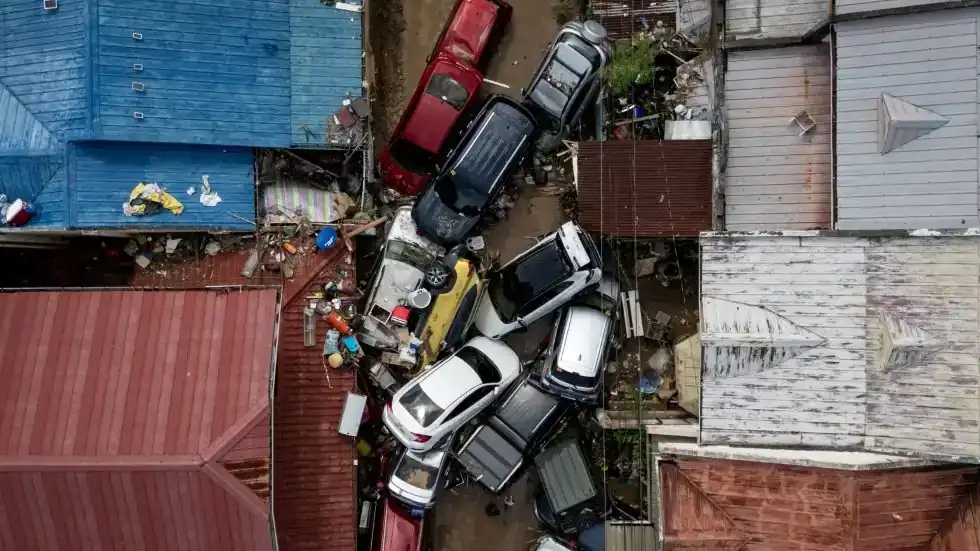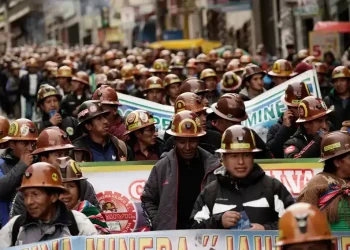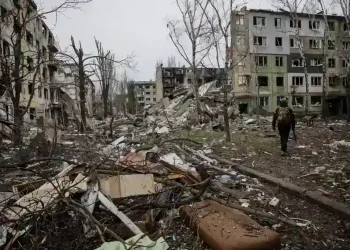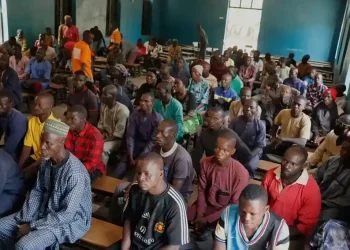Typhoon Kalmaegi, one of the most powerful tropical systems to hit Southeast Asia this year, has left widespread destruction across the Philippines and Vietnam, killing at least 188 people and displacing hundreds of thousands. The storm, which brought torrential rains and destructive winds, has reignited concerns over the increasing intensity of typhoons linked to the global climate crisis.
Destruction in the Philippines
Kalmaegi, known locally as Typhoon Tino, made landfall in the central Philippines on Tuesday, tearing through Cebu province and surrounding regions. Local officials said entire neighborhoods were reduced to rubble, with homes submerged, power lines toppled, and vehicles swept away by floodwaters. The country’s Office of Civil Defense reported at least 188 deaths and more than 130 people missing as of late Thursday.
Drone footage showed catastrophic flooding in Cebu City and nearby Talisay, where residents waded through waist-deep water. Thousands of homes along the Mananga River were buried in mud and debris. “We weren’t able to save anything. Everything is gone,” said Mely Saberon, 52, from Talisay. Another survivor in Cebu City described the floodwaters as rising so quickly that “there was no time to gather belongings.”
President Ferdinand Marcos Jr. has declared a state of national calamity and ordered continued relief operations across the central and southern Philippines. Emergency teams are working to reach isolated communities and distribute food and medical aid.
Vietnam Faces the Storm’s Fury
After battering the Philippines, Kalmaegi strengthened over the South China Sea before slamming into central Vietnam late Thursday with winds reaching 125 miles per hour, according to the U.S. National Oceanic and Atmospheric Administration (NOAA). The storm weakened as it moved inland but caused extensive damage in the provinces of Quang Ngai, Dak Lak, and Thua Thien Hue.
State media reported at least one death in Vietnam and three people missing after being swept out to sea near Ly Son island. More than half a million residents were evacuated, many by boat, amid warnings of life-threatening flooding and landslides. Local television showed images of collapsed homes, uprooted trees, and power lines brought down by the gale-force winds.
The typhoon’s impact was compounded by earlier floods that inundated parts of central Vietnam last week, submerging the UNESCO World Heritage town of Hoi An and damaging over 100,000 homes. Authorities said recovery efforts from those floods had barely begun when Kalmaegi struck.
Humanitarian Crisis Deepens
Across both countries, relief agencies are struggling to deliver aid to affected areas. In the Philippines, emergency shelters are overcrowded, and many survivors have limited access to clean water or electricity. In Vietnam, floodwaters have inundated farmlands, threatening food supplies and livelihoods.
International organizations, including the Red Cross and the United Nations Office for the Coordination of Humanitarian Affairs (OCHA), have begun assessing the scale of the disaster. The UN has warned that recovery in both nations could take months, particularly in rural and low-lying communities vulnerable to repeated climate shocks.
A Slow-Moving, Rain-Heavy Storm
Meteorologists say Kalmaegi’s unusual destructiveness stemmed from its slow movement and extreme rainfall. In parts of Leyte and northern Mindanao, the typhoon dumped 150 to 250 millimeters (6 to 10 inches) of rain in just 24 hours—more than the average monthly total for November. “Wind speed is often what people focus on, but water is almost always the number one killer,” said CNN meteorologist Taylor Ward.
Bernardo Rafaelito Alejandro IV, deputy administrator of the Philippines’ Office of Civil Defense, said the flooding was worsened by clogged drainage systems and inadequate infrastructure. “We must rethink how we build our cities,” he told local media. “We need larger, more resilient drainage systems and better early warning communication.”
Corruption Scandal Clouds Flood Response
The disaster has also reignited public anger over corruption allegations involving billions of pesos in flood control projects. Dozens of lawmakers and contractors are under investigation for allegedly misusing funds meant to build flood defenses. Protesters have taken to the streets, accusing officials of neglecting vital infrastructure that could have mitigated the storm’s impact.
Climate Crisis Intensifying Typhoons
Scientists warn that Typhoon Kalmaegi reflects a growing pattern of extreme weather fueled by global warming. The western Pacific is the world’s most active tropical cyclone basin, and ocean temperatures there have hit record highs for eight consecutive years. Hotter waters provide more energy for storms, allowing them to strengthen rapidly.
“The climate crisis is supercharging tropical storms,” said climate scientist Dr. Mei Lin of the University of Tokyo. “Warmer air holds more moisture, leading to more intense rainfall events like those we’ve seen in Vietnam and the Philippines.”
Just two months ago, Typhoon Ragasa tore through the Philippines, Taiwan, and southern China, underscoring how increasingly frequent and severe storms are placing immense strain on the region’s disaster preparedness systems.
Another Storm on the Horizon
Even as Kalmaegi weakens over mainland Southeast Asia, another tropical system, Fung-Wong—known locally as Uwan—is intensifying east of Luzon. The Joint Typhoon Warning Center said it could strengthen into a Category 3 or 4 storm over the weekend, posing new risks to northern Philippines already saturated by weeks of rain.
As both nations confront the aftermath of Kalmaegi, experts say long-term solutions will require major investments in infrastructure, climate adaptation, and regional cooperation. For many survivors, however, recovery remains an immediate and deeply personal struggle.
This article was rewritten by JournosNews.com based on verified reporting from trusted sources. The content has been independently reviewed, fact-checked, and edited for accuracy, neutrality, tone, and global readability in accordance with Google News and AdSense standards.
All opinions, quotes, or statements from contributors, experts, or sourced organizations do not necessarily reflect the views of JournosNews.com. JournosNews.com maintains full editorial independence from any external funders, sponsors, or organizations.
Stay informed with JournosNews.com — your trusted source for verified global reporting and in-depth analysis. Follow us on Google News, BlueSky, and X for real-time updates.














